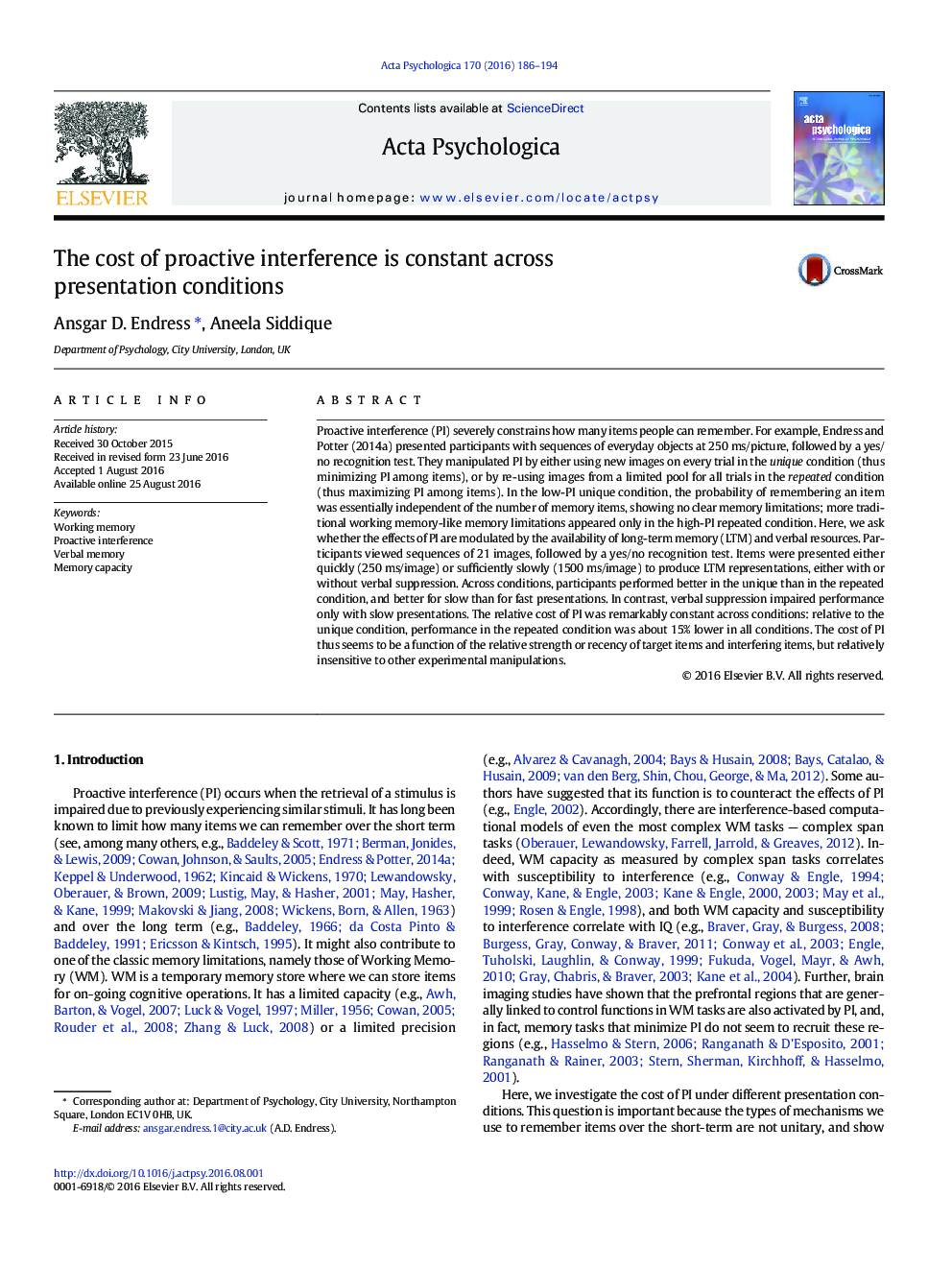| Article ID | Journal | Published Year | Pages | File Type |
|---|---|---|---|---|
| 7277009 | Acta Psychologica | 2016 | 9 Pages |
Abstract
Proactive interference (PI) severely constrains how many items people can remember. For example, Endress and Potter (2014a) presented participants with sequences of everyday objects at 250Â ms/picture, followed by a yes/no recognition test. They manipulated PI by either using new images on every trial in the unique condition (thus minimizing PI among items), or by re-using images from a limited pool for all trials in the repeated condition (thus maximizing PI among items). In the low-PI unique condition, the probability of remembering an item was essentially independent of the number of memory items, showing no clear memory limitations; more traditional working memory-like memory limitations appeared only in the high-PI repeated condition. Here, we ask whether the effects of PI are modulated by the availability of long-term memory (LTM) and verbal resources. Participants viewed sequences of 21 images, followed by a yes/no recognition test. Items were presented either quickly (250Â ms/image) or sufficiently slowly (1500Â ms/image) to produce LTM representations, either with or without verbal suppression. Across conditions, participants performed better in the unique than in the repeated condition, and better for slow than for fast presentations. In contrast, verbal suppression impaired performance only with slow presentations. The relative cost of PI was remarkably constant across conditions: relative to the unique condition, performance in the repeated condition was about 15% lower in all conditions. The cost of PI thus seems to be a function of the relative strength or recency of target items and interfering items, but relatively insensitive to other experimental manipulations.
Related Topics
Life Sciences
Neuroscience
Cognitive Neuroscience
Authors
Ansgar D. Endress, Aneela Siddique,
